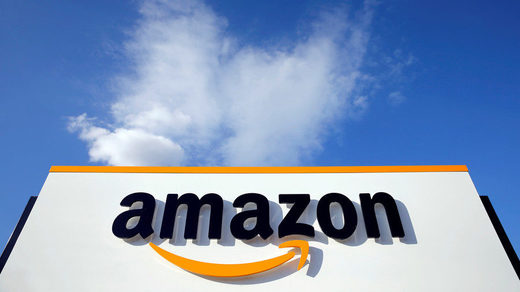A different kind of hurricane slammed into the American East coast, the nation and ultimately the world ten years ago today.
Amidst the multiple introspective columns and soul searching that naturally occurred this week, which looked back on the missed warning signs behind the 2008 financial collapse exactly a decade ago this weekend, there is a small group of people whose opinions are actually worth paying attention to.
Though arguably no single individual accurately called all aspects of the crisis in its entirety, precipitated by the implosion of Lehman Brothers, some did very publicly predict key facets with prophetic clarity. As Market Watch's Howard Gold explains in his profile of four analysts the world should have been listening to: "People warned about subprime mortgage loans, derivatives, and too much leverage, but nobody, to my knowledge, said a bursting housing bubble would cause a global crisis that would lead to the demise of venerable financial firms, require trillion-dollar taxpayer bailouts, and cause a recession that rivaled only the Great Depression in its magnitude."
Trouble is like many religious prophets of ancient history, they were rejected at the time, cast as dour harbingers of gloom and doom.
 Clockwise from upper left: Gary Shilling, Jim Stack, Raghuram Rajan and John Mauldin. Via MarketWatch
Clockwise from upper left: Gary Shilling, Jim Stack, Raghuram Rajan and John Mauldin. Via MarketWatch
Here are four names and their very public warnings that attempted to jolt the financial and banking sectors out of their sleepy stroll toward the abyss before 2008, as well as their predictions for the next big one, and what to look out for.
Howard Gold interviewed each, and laid out the key quotes summarizing then and now...
Economist A. Gary Shilling
President of consultancy A. Gary Shilling & Co., he started writing about a housing bubble in the early 2000s which Greg Lippmann (of "The Big Short" fame), credits with giving him the idea to bet against subprime mortgages. Describes Gold, "he warned his newsletter subscribers about a housing bust and wholesale deleveraging of household debt that would hobble the economy for years."
And this epic anecdote from the interview:
John Paulson contacted Shilling in August 2006. “He talked about credit default swaps. I didn’t know what they were,” Shilling recalled.
Shilling did some consulting for Paulson’s hedge fund and even invested what “was for the Shillings a major piece of money in this.” Paulson, of course, loaded up on CDS’s and made $4 billion in what has been called “the greatest trade ever.” “We made 15 times our money,” Shilling says.
His predictions pre-2008:
“Subprime loans are probably the greatest financial problem facing the nation in the years ahead.” —January 2004
“The [speculative housing] bubble’s break will cause widespread pain...and be much worse economically than the 2000-2002 bear market.”—June 2006
“We continue to forecast a 25% fall in median single-family house prices nationwide.” —November 2006.
What he says now:
“The ultimate thing that brings down financial markets is excess leverage … So, you look where’s the big leverage, and right now I think it’s in emerging markets.”
Shilling is particularly worried about the $8 trillion in dollar-denominated emerging-market corporate and sovereign debt, especially as the U.S. dollar rises along with interest rates. “The problem is as the dollar increases,” he said, “it gets tougher and tougher for them to service [that debt] because it takes more and more of their local currency to do so.” Of that, $249 billion must be repaid or refinanced through next year, Bloomberg reported.
* * *
Money manager Jim Stack
President of Stack Financial Management, which manages $1.3 billion, and InvesTech Research, a newsletter he launched in 1979, Jim Stack as a young analyst first gained some notoriety for calling the 1987 stock market crash. Describes Gold, "As housing prices kept rising, Stack built a proprietary tool called the Housing Bellwether Barometer. He called housing a bubble a year before it peaked and warned of bigger problems ahead for the economy and the markets."
His predictions of a new bear market coming were issued even as stocks were hitting all-time highs.
His predictions pre-2008:
“We are officially calling it a dangerous bubble...I see a trillion+-dollar government bailout of the mortgage industry at some point over the next decade.”—July 2005
“Our Housing Bubble Index has dropped into a freefall that rivals the dot-com bust of the late 1990s… We are moving to a full bear market defensive mode.”—July 2007
“We are nowhere near the bottom…It’s only a matter of time…until the housing debacle and credit crisis adversely impact the overall economy, increasing the likelihood of a recession.”—Interview with Equities magazine, November 2007
What he says now:
That housing-related stocks “saw a parabolic run-up” in 2016-17, but in January his index "peaked and now it’s coming down hard.” And this spells “bad news on the housing market looking 12 months down the road."
Per Howard Gold's interview:
But the biggest danger, Stack told me, is from low-quality corporate debt. Issuance of corporate bonds has “gone from around $700 billion in 2008 to about two and a half times that [today].”
And, he added, more and more of that debt is subprime. Uh-oh.
In 2005, he pointed out, companies issued five times as much high-quality as subprime debt, but last year “we had as much subprime debt, poor quality-debt issued, as quality debt on the corporate level,” he said, warning “this is the kind of debt that does get defaulted on dramatically in an economic downturn.”
Banker Raghuram Rajan
Previously the IMF’s chief economist and former head of the Reserve Bank of India, Rajan famously presented a paper at the Federal Reserve Bank of Kansas City’s annual retreat at Jackson Hole, in August 2005. To illustrate the general obsequiousness and self-congratulatory atmosphere of those times, Rajan recalled that some papers at the conference “focused on whether Alan Greenspan was the best central banker in history, or only among the best.”
Per Howard Gold:
Rajan turned out to be a party pooper, questioning whether “advances” in the financial sector actually increased, rather than reduced, systemic risk. Former Treasury Secretary Larry Summers called him a Luddite. “…I felt like an early Christian who had wandered into a convention of half-starved lions,” he wrote. But though delivered in genteel academic lingo, his paper was powerful and prescient.
His predictions pre-2008:
“Managers…have greater incentive to take risk…because the upside is significant, while the downside is limited.”
“Moreover, the linkages between markets, and between markets and institutions, are now more pronounced. While this helps the system diversify across small shocks, it also exposes the system to large systemic shocks…”
“The financial risks that are being created by the system are indeed greater… [potentially creating] a greater (albeit still small) probability of a catastrophic meltdown.”
What he says now:
“There has been a shift of risk from the formal banking system to the shadow financial system.” He also told me the post-crisis reforms did not address central banks’ role in creating asset bubbles through accommodative monetary policy, which he sees as the financial markets’ biggest long-term challenge.
“You get hooked on leverage. It’s cheap, it’s easy to refinance, so why not take more of it? You get lulled into taking more leverage than perhaps you can handle.”
And what might be coming:
Rajan also sees potential problems in U.S. corporate debt, particularly as rates rise, and in emerging markets, though he thinks the current problems in Turkey and Argentina are “not full-blown contagion.”
“But are there accidents waiting to happen? Yes, there are.”
* * *
Writer John Mauldin
Best known for his free weekly e-letter “Thoughts from the Frontline,” the Dallas-based chairman of Mauldin Economics, John Mauldin began worrying about housing very early, sometimes featuring commentary from Gary Shilling during the run-up to the crisis. Described by Gold, he "said a housing bust would lead to a drop in consumer spending, a bear market, and a recession (though at first he thought it would be a mild one), and that credit default swaps (CDSs) posed a systemic risk."
His predictions pre-2008:
“A slowing of the housing market, and thus the economy, is in our future… This in turn suggests that as growth in consumer spending slows, a bear market in equities is a high-probability outcome.”—March 2006
“…The stock market is going to be under considerable pressure next year. The average drop of the markets is about 40% before and in a recession….Dow 9,000 is a real possibility, if not probability”—December 2006. (The Dow bottomed at 6,547.05 in March 2009.)
“The one true risk that is simply not knowable at this point is in the Credit Default Swap (CDS) market….The CDS market is huge, in the hundreds of trillions of dollars and growing dramatically… There is no agency overseeing counter-party risk. This is the one true systemic risk that I see.”—July 2007.
What he says now:
“I think the choice of Europe is… going to have to put [all the debt] on the balance sheet of the European Central Bank. If they don’t, then the euro zone breaks apart and we’re going to get a 50% valuation collapse.”
“Greece...is a rounding error. Italy is not…. And Brussels and Germany are going to have to allow Italy to overshoot their persistent debt, and the ECB is going to have to buy that debt."
"If it doesn’t happen, the debt triggers a crisis in Europe, [and] that triggers the beginning of a global recession" but... “there are so many little dominoes, if they all start falling, one leads to the next.”
Comments Howard Gold,
Mauldin estimates the world has almost “half a quadrillion dollars,” or $500 trillion, in debt and unfunded pension and other liabilities, which he views as unsustainable.
But the flashpoint for the next crisis is likely to be in Europe, especially Italy, he maintains.
via IFTTT

















